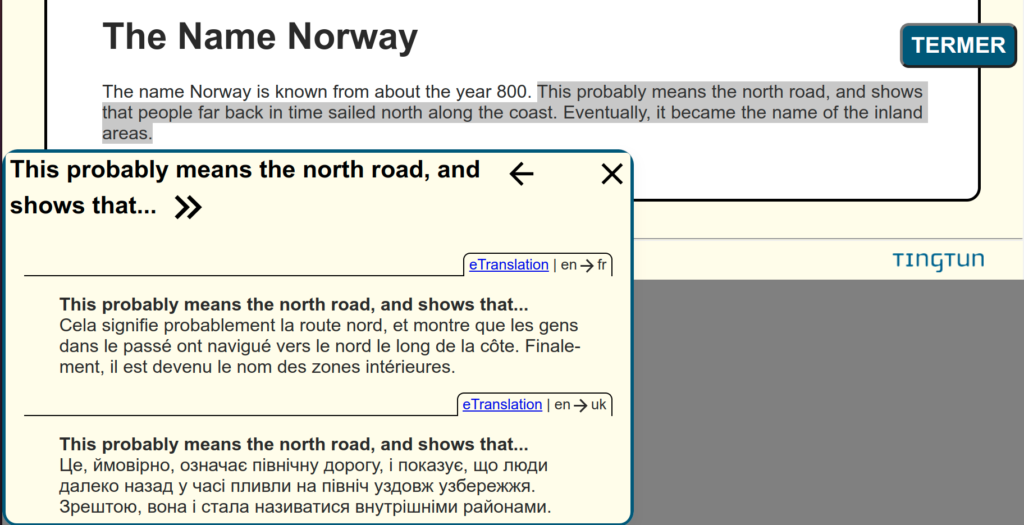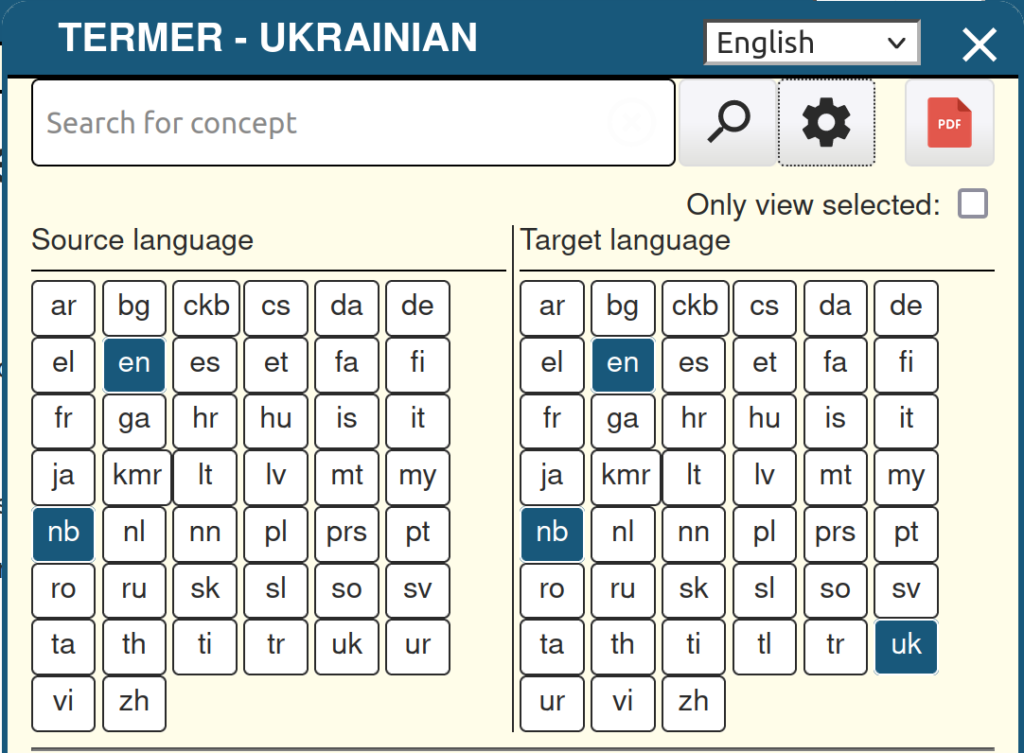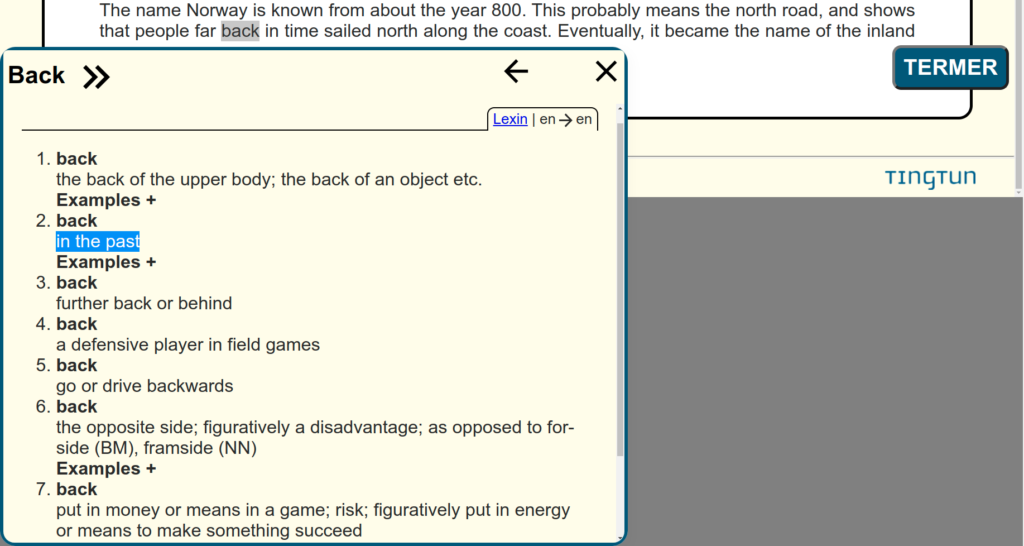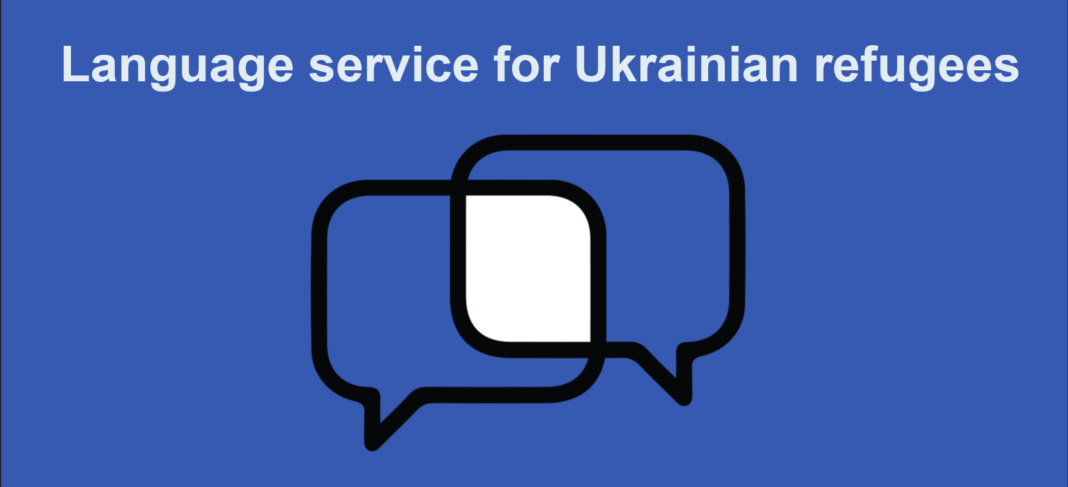When Ukrainian refugees travel across Europe they will need to navigate through large amounts of information. This includes information about where to live, go to school, work, or how to find health services. The answers may only be available in a foreign language for refugees in a new country.
eTranslation from the European Commission covers machine translations among all official languages in the European Union and a selection of additional languages, including Norwegian, and recently also Ukrainian. Given this coverage we can combine machine translations with dictionaries to help newly arrived refugees, both to understand information, and to learn a new language.
To deliver this combined service to refugees arriving in Norway we have integrated eTranslation into TERMER, a tool from the Mobile Age project, co-funded by Horizon 2020, Grant agreement ID: 693319.
Figure 1 shows an example where an English text is translated into French and Ukrainian. The functionality can be seen on this demo page. Select any portion of text and press enter to show the translation. The translations are presented on top of the original text to keep the user in the reading flow, and to indicate that the translated text is automatically generated. This design is also chosen to facilitate learning.

The source language and target languages can be configured to translate among different languages. To access the settings, click on the Termer button in the upper right hand corner of the screen and then on the settings wheel. The settings dialogue is shown in Figure 2.
Translations into more than one language can sometimes help users to a better understanding or to spot mistakes from the machine translations. Note that only one source language will result in valid translations for a given text.

While translations are useful to understand content, we may also want to explore individual concepts in more detail to verify a translation or to learn the language. eTranslation can produce results for a single word. However, such translations can be misleading. For example, the English term “back” can refer to the back of a person, back in time or a defensive player in a game. To get the overview of such meanings we will need a dictionary.
From the settings, indicated in Figure 2, the user can also select dictionaries to apply. One of the available dictionaries is Lexin, developed for refugees coming to Norway and to Sweden. The Norwegian version covers around 20 minority languages, 36 000 words and expressions and is maintained by the National Center of Multicultural Education (NAFO) at the Oslo Metropolitan University.
Unfortunately this dictionary does not yet cover Ukrainian. However, we can translate the English meaning of a term with eTranslation to get a reasonable result in Ukrainian. For example we can look up the English meaning of the concept “back”, and translate into Ukrainian.

The highlighted English text in Figure 3 can then be translated into Ukrainian and French as shown in Figure 4. In this way we can select a text from a web page or from a lookup result and combine dictionaries with eTranslation. This can cover more languages and be useful for a wider group of people to support reading and learning.
Further information about Norwegian concepts can be provided with additional sources including the Great Norwegian Encyclopedia (SNL.no) and Bokmålsordboka and Nynorskordboka (Ordbøkene.no). Ordbøkene shows inflection and the official Norwegian spelling for around 100 000 words and is maintained by the Language Council and the University of Bergen. SNL is a Norwegian-language online encyclopedia with around 200 000 articles owned by Norwegian universities and several non-government organisations. The lookup results from these dictionaries can also be translated into Ukrainian in the same way.

To support the learning of more languages we can add further dictionaries. For English learning we can add Wordnet from Princeton university, and particularly useful for government content we can add IATE, the Interactive Terminology for Europe, with all official languages in the European Union, With around 8 million terms in nearly 1 million entries, IATE is the reference in the terminology field, and is considered to be the largest multilingual terminology database in the world.
The capability to translate from Norwegian to Ukrainian and from Ukrainian to Norwegian can be useful both for refugees and for those communicating with them. We are continuously working to improve the service and welcome your feedback if you encounter any errors or have suggestions. Please use the feedback button in the service.
Since this is a new service we have prepared a handout to reach the refugees shown in figure 4. The QR code is a convenient entry point as many refugees have mobile phones.

To sum up, the Termer service can be used to combine machine translations with dictionary lookups for any language based on the available resources. The service is designed to be easy to use, fully accessible for all, including people with disabilities, and to protect user privacy with no need for registration.
Scan the QR code or use the link Tingtun Termer for Ukrainian to start using the service.

